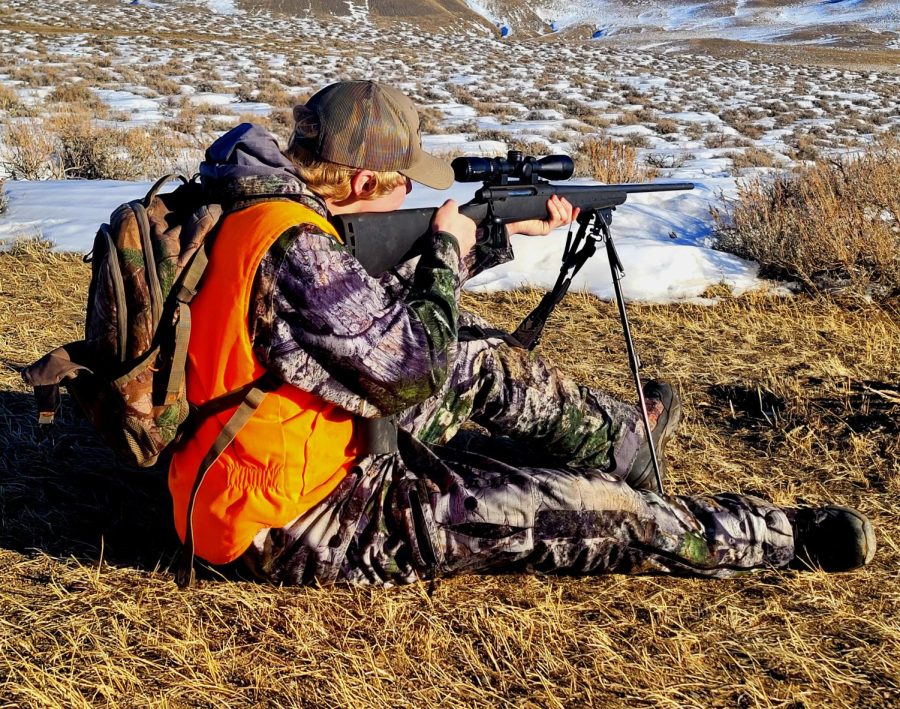BLM plans to improve hunting and fishing access on newly acquired Marton Ranch property
The author peers into his scope while looking over an expanse of the new land acquired by BLM. The land management agency plans to develop access and hunting opportunity in the coming years and expects high use due to the area’s proximity to Casper.
March 8, 2023
In early June 2022, the Bureau of Land Management (BLM) purchased 35,670 acres of land Southwest of Casper.
Justin Benfit, a game and fish biologist says, “It is a general hunting area, and we are expecting around 700 deer hunters next season.”
After being listed on the open market for nearly 10 years, BLM was finally able to request the ranch from the Conservation Fund, who approved them to buy the entire property. The BLM has had an ongoing plan to improve river access and the Marton Ranch was only a part of the process. Tyson Finnicum, an energy resource advisor for BLM says, “It has been a coordinated effort of the past 20 years to identify willing sellers and work with them to purchase portions of property.” Possible plans for future recreational projects such as boat ramps or campgrounds can be established, like other portions of land BLM has ownership of already.
Not a lot of research about the health of the land has been done, but, “We have done a couple small scale cultural surveys in some areas this past summer,” says Finnicum. Range specialists are in charge of land health evaluations which have not been implemented in the Marton Ranch area yet.
Harlee Shamber, a senior outdoorsman at NC, typically hunts private land because her family doesn’t care for crowded hunting areas. More public access benefits Shamber because, “new land means more space to spread out and hunt.” Maintenance is important in keeping Shamber interested in trying the new access, saying “I hope the area isn’t overgrazed. I think that will reduce the wildlife populations to the point where we can’t even hunt.” Lands are taken care of through various ways such as prescribed burns, weed treatment, and rest from grazing. According to Finnicum, within the next couple of years BLM will move towards improving habitat and public access.
Most of the acquired land is high sagebrush habitat but the river bottoms contain some scattered cottonwoods and willows. Natrona environmental science teacher, Jenny Edwards, believes opening more land to the public is always a plus, but she is concerned about how significant snowfall threatens the environment. Deer, elk, and antelope are ungulates which “consume leaves from various shrubs, brush, trees, and grasses,” says Edwards. Heavy snowfall may reduce the vegetation for wildlife, impacting the amount of huntable deer in the area. Although snow is needed to ensure water availability, “If these ungulates cannot consume enough energy through the harsh winter, mass starvation events can occur,” says Edwards.
Wildlife populations, such as antelope, have shown an increase near the ranch; but Benfit says, “Mule deer numbers are below population objective.” He expects more possible loss in various species with upcoming winters, and chronic wasting disease (CWD) rates. The deer hunt area where the ranch is located, area 66, shows significant amounts of CWD. Benfit says, “We have CWD in 29% of adult bucks,” meaning CWD testing of harvested animals is suggested.
New public lands are a benefit to hunters and anglers but can only serve its purpose if managed correctly. Edwards holds outdoorsmen accountable by saying, “The land only benefits people as long as it’s treated well.”

